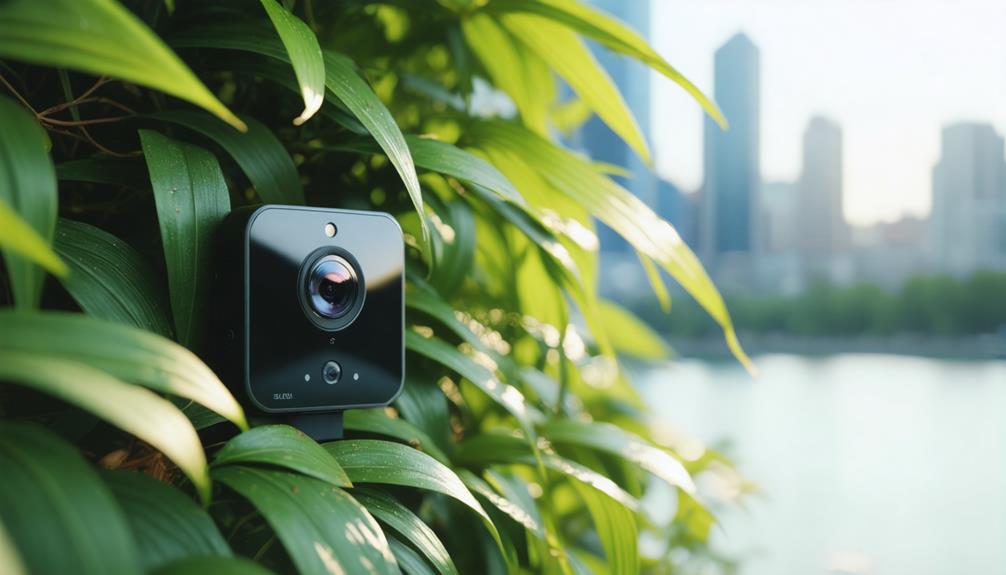
Brainstorm Security Shop

For Orders Over $199

On Any Of Our Products

Details On Refund Page
As you consider the security and efficiency of your hospital, have you explored the potential of motion detection cameras? These systems aren’t just about monitoring; they’re about integrating technology to enhance patient safety and staff workflow. By detecting unusual activity, they provide a quick response mechanism that could be crucial in preventing incidents. However, the real question is how these tools balance with privacy concerns and the overall hospital environment. Are they worth the investment? Let’s examine how they’re currently being utilized and what future applications may look like in your facility.
Motion detection technology captures any movement within a specific area, sending alerts or triggering automatic responses. You’ll find that understanding the intricacies of this technology can greatly enhance your ability to manage security protocols.
At the heart of this system are motion sensors, which rely on advanced detection algorithms to differentiate between normal and suspicious activities. These sensors work in tandem with various camera types, each suited to specific environmental factors and lighting conditions.
Image processing plays a crucial role as well, refining the camera’s raw footage so that only relevant movements are considered. This helps in reducing false alarms—a common issue in areas with fluctuating lighting and weather conditions.
Moreover, the sophistication of user interfaces allows you to customize settings, view footage, and manage alerts with ease. Data storage is another critical element, ensuring that all captured footage is securely archived for future reference or evidence.
Network connectivity enhances the functionality of motion detection systems, facilitating seamless communication between devices and enabling real-time alerts to your mobile devices or central security stations. This interconnectedness ensures that you’re always informed and ready to respond, no matter where you are.
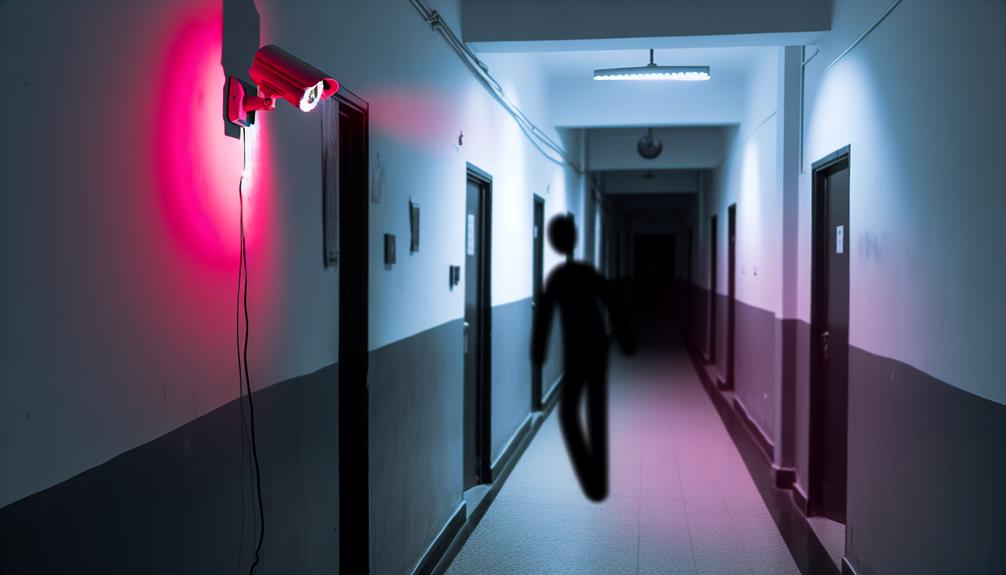
With your understanding of motion detection technology now firmer, consider the significant advantages it offers in enhancing hospital security. These systems are crucial for threat detection, enabling you to spot unauthorized access or suspicious activity instantly. This immediate alerting minimizes potential harm, as security personnel can respond swiftly and efficiently.
Motion detection cameras act as your eyes throughout the facility, covering areas that are less frequented by staff. You’ll appreciate how this technology integrates seamlessly with other security measures, forming a comprehensive safety net around the hospital.
When an incident occurs, these cameras are invaluable. They provide real-time data, helping you understand and manage the situation effectively. This capability ensures that you’re not just reacting to threats, but you’re staying ahead of them.
Moreover, the presence of these cameras alone can deter potential offenders, reducing the risk of incidents. They record continuously, ensuring that you have evidence at your fingertips should you need it for investigations or legal proceedings.
Thus, investing in motion detection cameras boosts your overall security posture, making your hospital a safer place for both patients and staff.
Expanding beyond security, these cameras also revolutionize patient monitoring in hospitals. You’ll see how monitoring technology not only observes but actively enhances patient behavior and health outcomes.
These smart cameras provide real-time data analytics, allowing for immediate caregiver insights into potential health deteriorations or emergencies. This capability is crucial for timely incident response, which can drastically improve care quality.
The integration of motion detection cameras into safety protocols means you’re always under surveillance that’s tailored to foster patient engagement and ensure your safety. This isn’t just about watching; it’s about understanding and reacting to your needs before they become urgent.
For example, if you’re struggling to get out of bed, the system alerts nursing staff to assist, thereby preventing possible falls and injuries.
Furthermore, the surveillance effectiveness isn’t just about recording events—it’s about predicting and preventing them. By analyzing trends in patient movement and behavior, hospitals can adjust their care procedures and environments to better suit your needs.
This proactive approach not only secures your well-being but also enhances the overall environment, making it safer and more responsive to your health requirements.
As we’ve seen motion detection cameras improve patient safety, these systems also play a key role in safeguarding hospital staff. You’ll find that these cameras aren’t just about monitoring; they’re essential tools for enhancing your safety on the job.
By integrating motion detection systems, hospitals can quickly identify areas where staff might be at risk—whether it’s from unauthorized access or unexpected patient behavior.
Let’s talk about how these systems aid in staff training. Imagine you’re walking through a scenario captured on these cameras. You can review incidents where staff faced danger, learning how to handle similar situations better in the future. This isn’t just about reactive measures; it’s proactive protection.
Moreover, motion detection cameras streamline emergency protocols. If you’re in a situation where help is needed urgently, these cameras ensure that your location is immediately known, and help is on the way faster than ever.
They can alert security personnel to specific areas where their presence is crucial, thereby reducing response times and potentially preventing escalations.
Integrating motion detection cameras with other hospital systems boosts their effectiveness and your ability to respond to incidents swiftly. By enhancing system interoperability, you’re not just observing; you’re actively connecting dots across various platforms.
Think of it this way: when a camera picks up unusual activity, it’s no longer an isolated incident. The system can immediately communicate with access control, alerting security personnel who can then react more accurately and promptly.
This seamless data integration allows for a holistic view of safety and operational efficiency. For instance, if a restricted area is breached, not only does the camera record the event, but it also triggers an alarm via the integrated systems, ensuring that the response is both immediate and appropriate. You’re not piecing together information from disconnected sources; everything communicates in harmony.
Moreover, by syncing these cameras with patient management systems, you can enhance patient care. A sudden movement in a high-risk patient’s room can automatically alert nursing staff, potentially speeding up response times during critical situations.
This isn’t just about security; it’s about creating a responsive, interconnected environment where every element of the hospital’s operational infrastructure works together for better outcomes.
With the adoption of motion detection cameras, it’s crucial to address privacy concerns and ethical implications. You’ve got to think about how these tools impact patient autonomy and trust dynamics in a hospital setting.
It’s your right to know how your data is being handled, and that starts with robust data protection measures and clear consent protocols.
When you’re in a hospital, you want to feel safe, not watched. That’s why surveillance transparency is so important. Hospitals need to clearly communicate what’s being recorded, why, and who’s access to this information.
It’s not just about installing cameras; it’s about maintaining a security balance that respects your privacy and ensures your safety.
Understanding the ethical implications of using such technology is key. Are the cameras there just to monitor movement, or are they infringing on your personal space?
Legal compliance is a must, but so is ethical responsibility. Hospitals must navigate these waters carefully to uphold your dignity and retain your trust.

You’ll find that investing in motion detection cameras isn’t just a financial decision; it’s about enhancing operational efficiency too.
By examining the returns on financial investment, you can assess how quickly these technologies pay for themselves.
Additionally, consider how these advancements can streamline hospital operations, potentially saving much more than just money.
Investing in motion detection cameras can significantly boost a hospital’s security efficiency, translating into substantial financial benefits. When you’re weighing your investment strategies, consider how these advanced technologies reduce costs associated with security breaches and incidents. Financial projections indicate that the reduction in liability payments alone can justify the initial outlay.
You’ll see that the upfront costs of motion detection cameras are offset by long-term savings. Insurance premiums, often a hefty expense for hospitals, can decrease as insurers recognize the lower risk of theft and vandalism associated with enhanced surveillance.
Moreover, the potential reduction in legal costs, stemming from fewer incidents of hospital security breaches, adds another layer of financial return.
Consider the impact on your hospital’s budget. By integrating motion detection cameras, you’re not just investing in hardware; you’re investing in peace of mind for staff, patients, and visitors.
This can indirectly boost your hospital’s reputation, potentially attracting more patients who prioritize safety in their healthcare choices, further enhancing your financial outlook.
By integrating motion detection cameras, hospitals can streamline their security operations, leading to significant operational efficiency gains.
You’ll see improvements in workflow optimization as cameras monitor and manage patient flow and staff movements without human intervention. This constant surveillance allows for quicker adjustments and smarter resource management.
These cameras contribute significantly to staff productivity. They reduce the need for manual monitoring, freeing up your staff to focus on more critical tasks.
With better data analysis capabilities, you can quickly understand and react to patterns in patient activity, optimizing staff allocation accordingly. Incident response times also improve as cameras can immediately alert personnel to areas needing urgent attention.
Moreover, equipment tracking becomes less of a burden. Cameras placed strategically around high-value equipment ensure that you’re always aware of where your assets are, reducing the risk of loss or misuse.
This is crucial in maintaining operational readiness and avoiding unnecessary replacement costs.
Process automation, facilitated by motion detection, streamlines routine tasks, cutting down on redundant processes and minimizing human error.
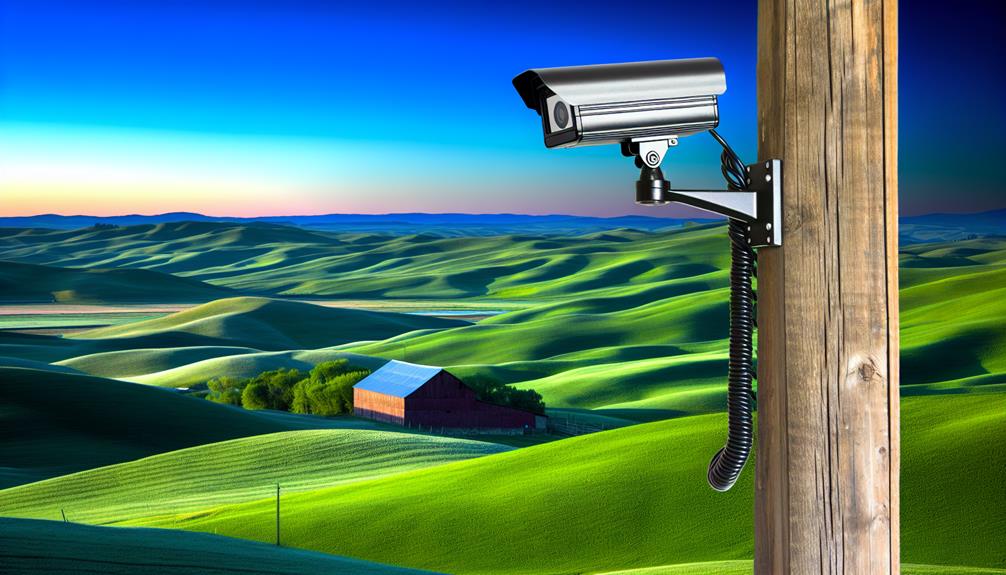
When installing motion detection cameras in hospitals, you need to prioritize optimal camera placement to ensure comprehensive coverage and security.
It’s crucial that you comply with all technical requirements to maintain system integrity and functionality.
Several factors must be considered to ensure optimal camera placement in hospitals. First, you’ll need to assess strategic zones and high traffic areas where the bulk of activity occurs.
It’s crucial to cover entrances, patient pathways, and emergency exits to maintain a secure environment. You’ll also want to optimize camera angles to maximize surveillance coverage while minimizing blind spots.
When placing cameras, focus on entrance monitoring to track all individuals entering and exiting the premises. This is vital not just for security purposes but also for ensuring compliance with health protocols.
Additionally, consider the natural flow of traffic within the hospital to avoid creating obstructions that could impede camera views.
Lighting conditions play a significant role in the effectiveness of motion detection cameras. You’ll need to ensure that areas are sufficiently lit for the cameras to function properly, especially during nighttime.
Conduct an obstruction analysis to confirm that no physical barriers interfere with the camera’s line of sight.
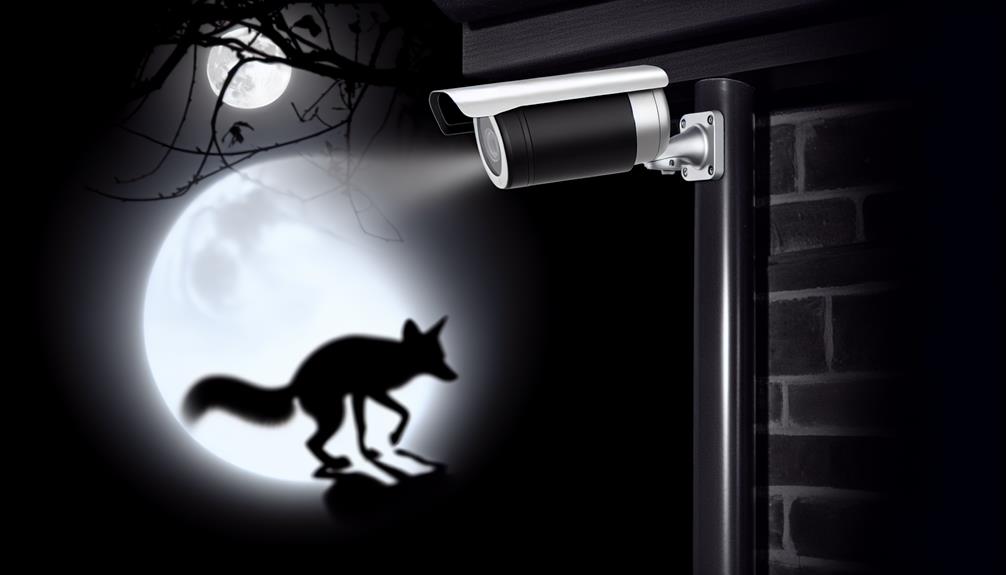
Ensuring your motion detection cameras comply with technical requirements is critical for effective installation and operation. You’ll need to align with regulatory standards and prepare for compliance audits to ensure everything is up to par. Start by reviewing performance metrics that reflect the cameras’ effectiveness and reliability within a hospital setting.
You must also confirm system interoperability, ensuring your new cameras work seamlessly with existing security infrastructure. Don’t overlook data retention policies—these are crucial for protecting recorded data while complying with privacy laws. Make sure the cameras meet security certifications to safeguard sensitive hospital environments against potential threats.
Follow the manufacturer’s installation guidelines to the letter. This isn’t just about putting cameras in the right spots; it’s about securing them in a way that maintains their functionality and compliance. Incorporate user training so staff can handle the system effectively, reducing risks associated with improper use.
Regular risk assessments can preempt potential vulnerabilities, while thorough vendor evaluations ensure you’re getting the best technology and support available. Remember, cutting corners now can lead to significant issues down the line, so take your time to get this right.
Case studies highlight how motion detection cameras in hospitals have revolutionized security and patient care. Through real-life scenarios, these studies demonstrate the successful implementations and positive outcomes of integrating advanced surveillance technologies. Here’s what you need to know:
These cameras aren’t just about watching; they’re about integrating data-driven insights and proactive management into the daily operations of healthcare facilities.
They serve as crucial tools in both preempting potential issues and in crafting quick responses when incidents occur.
As you consider the implications for your own institution, remember how vital this technology has become in shaping modern healthcare environments.
As you look ahead, you’ll find that AI-enhanced monitoring is set to revolutionize hospital surveillance, making systems not only more efficient but also more responsive.
At the same time, there’s a growing emphasis on addressing privacy concerns, ensuring that these technological advances respect patient confidentiality.
These developments promise to balance cutting-edge technology with ethical standards, transforming how security is managed in healthcare settings.
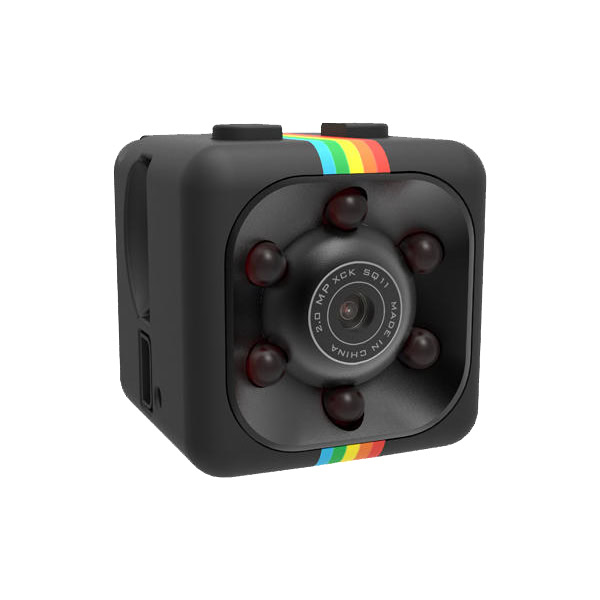
Hospital surveillance is set to transform with the next wave of AI-enhanced monitoring advancements. As you navigate the complexities of hospital management and patient care, you’ll find that integrating AI into your surveillance systems not only enhances security but also improves operational efficiency.
Here’s how AI is revolutionizing hospital surveillance:
These AI tools not only safeguard patient confidentiality but also fortify the overall security framework of your institution.
While AI-enhanced monitoring systems in hospitals significantly boost security and operational efficiency, they also raise substantial privacy concerns. You’re right to worry about how these technologies affect patient confidentiality and data protection.
Hospitals are tackling these issues head-on by implementing strict consent protocols and enhancing surveillance ethics. This isn’t just about watching more closely; it’s about watching more wisely.
You’ll see that hospitals are now prioritizing transparency in their monitoring processes. They’re not only adhering to legal compliance but are going beyond to ensure that all surveillance activities are openly documented and justified. This approach helps in managing public perception and building trust.
Moreover, staff training is integral, equipping hospital personnel with the knowledge to handle sensitive data responsibly and ensure technology accountability.
Another key aspect is the careful handling of image retention. Hospitals are setting clear guidelines on how long images are stored and who can access them. By doing so, they address potential risks associated with prolonged storage of surveillance data.
In essence, as hospitals continue to embrace these advanced monitoring systems, they’re also setting new standards in protecting your privacy. They’re not just watching—they’re listening to your concerns and responding proactively.
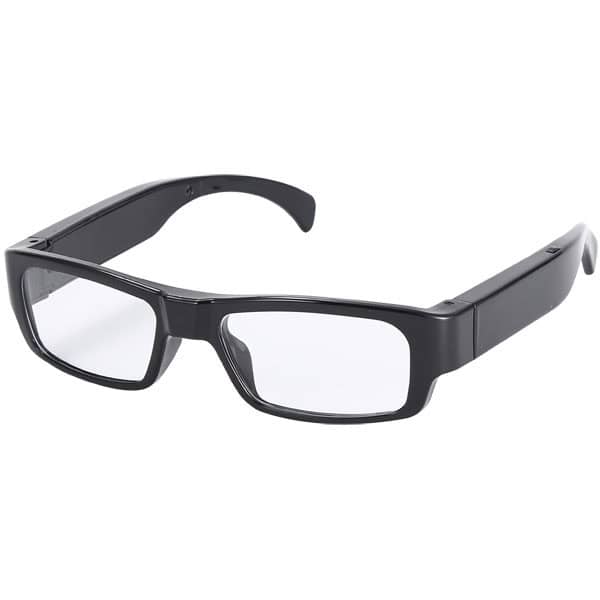
You might wonder if motion detection cameras can pinpoint specific individuals.
Generally, these cameras detect movement rather than identifying distinct people, balancing privacy concerns with security benefits. They’re not designed to recognize faces but to alert to activity in designated areas.
This ensures you’re informed without compromising individual privacy. So, while they enhance security by monitoring movement, they don’t cross into the territory of personal identification unless paired with other technologies.
You might wonder how cameras perform in dim environments.
These devices often come equipped with night vision capabilities, enhancing their low light performance. This means they can capture clear images even in poorly lit conditions, ensuring nothing slips by unnoticed.
Whether in a shadowy corridor or during nighttime, they maintain vigilance. It’s like having an extra set of eyes that work exceptionally well, even when it’s nearly dark.
To keep your motion detection cameras in top shape, you’ll need regular maintenance. This includes periodic camera calibration to ensure accuracy and functionality.
Don’t overlook the importance of software updates; they’re crucial for enhancing features and fixing bugs.
It’s also wise to clean the lenses and check the hardware for any signs of wear and tear.
Staying on top of these tasks will help prolong the life and effectiveness of your cameras.
Yes, there are wireless options available for your needs, offering flexibility in placement and easier installation compared to wired systems.
However, you’ll need to consider network security carefully to protect sensitive data from breaches.
Wireless systems can pose additional installation challenges, such as ensuring reliable connectivity and coverage throughout the area.
It’s crucial to evaluate the infrastructure of your setting to determine if a wireless solution is feasible and effective.
Yes, some motion detection cameras do include audio recording capabilities.
However, you should be aware of the privacy concerns and legal regulations surrounding audio surveillance.
Different regions have specific laws about recording conversations, which can impact how you legally use these devices.
It’s crucial to check local laws and possibly consult with legal counsel to ensure compliance, especially in sensitive areas like hospitals where privacy is paramount and legally protected.
As you’ve seen, motion detection cameras are transforming hospital safety and security. They not only enhance security but also boost patient monitoring and staff safety. Integrating these systems streamlines operations and upholds privacy. While the initial cost may seem high, the long-term benefits justify the investment. Remember to follow best practices during installation to maximize effectiveness. Embrace these evolving technologies to ensure your hospital remains at the forefront of safety and efficiency in the ever-changing healthcare landscape.
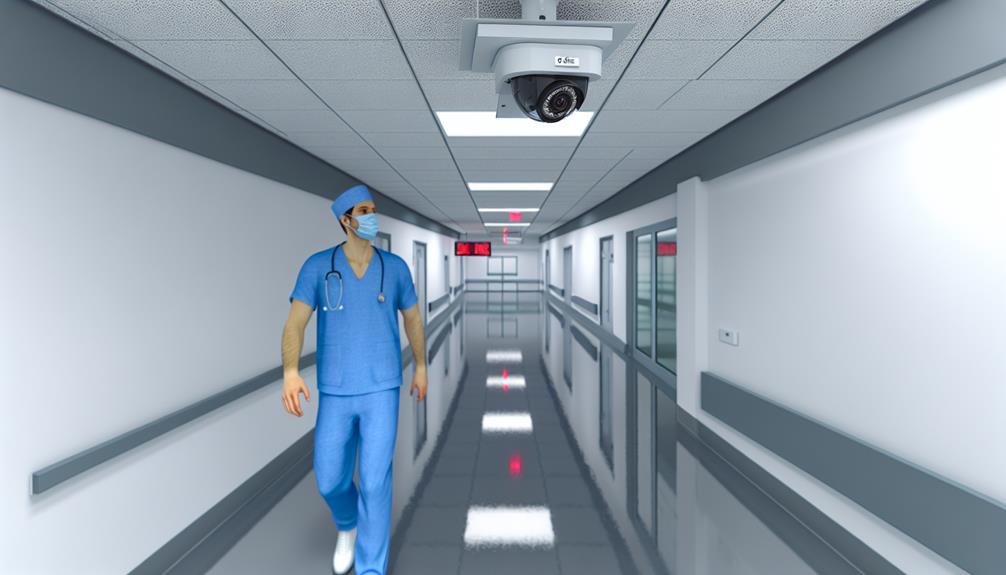
Brainstorm Security Shop
1867 Caravan Trail
Ste 105
Jacksonville, FL 32216
Call us toll free: (800) 859-5566